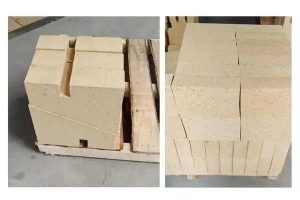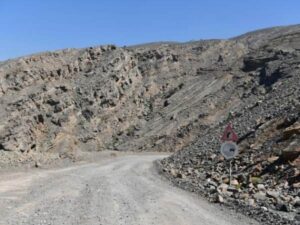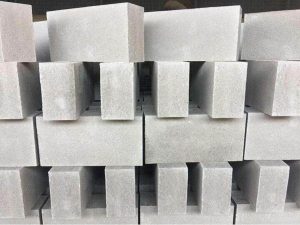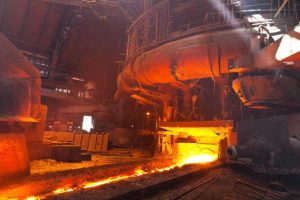Why High Alumina Brick Black Heart?
After years of development, the amount of high alumina products in the furnace market has increased significantly in recent years, and the masonry of important parts of the furnace all need to use high alumina bricks. لكن, with the increasing variety of high alumina products and more and more R&D units, the requirements (technical indexes) for high alumina products are also getting higher and higher.
High Al2O3 content, low apparent porosity, high load softening point, small refired change rate, معدل زحف صغير, and strict appearance quality, إلخ. لكن, in the production of high alumina products with AL2O3, content greater than 60%, the problem of black center often occurs after the high-temperature firing of plain billets. When the problem is serious, its black heart will penetrate the brick body, resulting in product quality reduction, which can not be used and other situations. High alumina black heart brick products not only affect the appearance of quality but importantly, various physical and chemical indicators of different degrees of reduction.
High alumina brick black heart introduction: the black heart is a phenomenon that occurs in the production process of high alumina brick. The color of the back of the produced high alumina brick gradually changes, from the outer layer of yellow-green to the inner slowly becoming gray-black. If it is calcined again in an oxidizing environment, the black heart part will become white again.
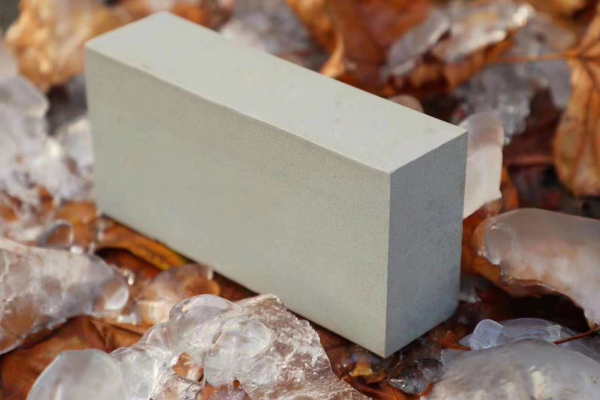
Why does The Black and White Color of High Alumina Brick Appear?
The main reason why high alumina bricks appear black and white color is because of high temperature and reduced gas 6 atmosphere. So that the iron and titanium ion reduction coloring, at a lower temperature let the low iron and titanium ion re-oxidation and decolorization.
Another thing is that the high alumina brick is located too close to the firebox near the kiln, resulting in a high temperature of the hot air causing oxygen-rich operation and avoiding reducing atmosphere. In the cooling process, slow cooling, so that the low iron and titanium ions re-oxidation and decolorization. So reminding refractory manufacturers in the process of production to pay special attention to these issues are important reason affecting the appearance of high alumina refractory brick quality.
High Alumina Bricks Produce Net Cracking Causes and Treatment Methods
The production of high alumina bricks often appears to be defects, and mesh cracking generated by the reasons is more complex. The impurity content of clinker (especially R2O content), the degree of sintering, the critical particle size, the number of fines added, the mixing quality of the clay, the humidity and temperature of the billet drying medium. The shrinkage occurring in the billet during the sintering process and the secondary palletization reaction and the recrystallization effect of corundum can all lead to reticulation on the surface of high alumina bricks.
The sintering of high alumina bricks is liquid phase sintering, and the formation temperature and amount of liquid phase, the heating rate, and atmosphere conditions during sintering are also important factors that lead to inconsistent shrinkage, resulting in surface reticulation cracks.
The degree of sintering and the sintering atmosphere and volatiles present in the gas phase has a great influence on the surface reticulation cracking of high alumina bricks. Poorly sintered clinker continues to shrink during the sintering process of high alumina bricks, causing cracking and crazing of high alumina bricks.
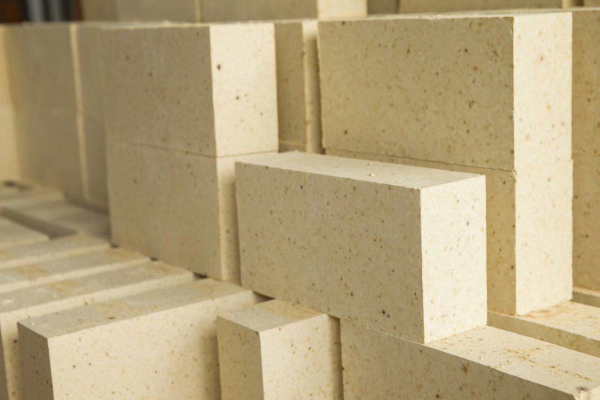
أيضًا, the secondary mullitization in poorly sintered clinker is not sufficient. The secondary mullitization of the clinker itself continues during the firing of the high alumina brick, which is an intrinsic factor causing the inconsistent shrinkage of the high alumina brick. It leads to an increase in the number of reticular cracks and the degree of cracking of the high alumina brick.
The degree of reticular cracking on the surface of the high alumina brick is also closely related to the water absorption rate of the clinker used. The greater the water absorption of the clinker, the greater the degree of cracking of the mesh. When the clinker with water absorption rate reaches the brick, high alumina brick in the sintering process clinker itself continues to complete the sintering process, high alumina brick shrinkage is larger and uneven, and thus prone to cracking and mesh.
فضلاً عن ذلك, the kiln firing atmosphere is also one of the reasons why the high alumina brick produces net cracking. When firing high alumina bricks, the kiln atmosphere needs to be weak oxidation flame, excess air coefficient control in practice shows that the high alumina brick surface network cracks tend to increase the excess air coefficient and reduce. But the air excess coefficient fluctuations should not be too large.
فضلاً عن ذلك, high alumina refractory brick surface network cracks are mostly produced on the brick surface within the yard brick gap. لذلك, it can be inferred that when the excess air coefficient in the kiln is small, or when a reducing atmosphere is produced. CO is easily retained in these places due to the small brick seam, thus reducing Fe2O3 in the high alumina brick to FeO. The surface of the refractory brick facing the channel, the airflow is relatively smooth, so it will not be affected by the change in atmosphere, and no network cracks are produced. It is particularly important to note that frequent changes like the combustion atmosphere should be avoided as much as possible during firing. Because the effect of such alternating changes will cause damage to the surface.
The chemical analysis of the surface and the central part of the high alumina brick with more surface network cracks can be seen: the Al2O3 on the surface of the high alumina refractory brick body is 1%-2% higher than the central part, while the SiO2 is 1-2% lower and the NaOb is more than 10 times higher than the center.
From the physical phase analysis, it can be seen that the mullite content of the surface skin is 12% lower than the central part, the corundum content is 4%-5% higher, and the glass phase content is 7%-8% higher. This indicates that during the migration of Na2O, Na+ volatilizes and adsorbs on the surface of the high alumina brick, which will promote to make the mullite decomposition. So that the mullite on the surface of the high alumina brick decreases and the corundum and glass phases increase. Due to the increase and early appearance of the amount of liquid phase on the surface, the brick surface shrinks prematurely, leading to the generation of the net pattern.
Practice shows that to avoid and reduce the network crack generation, the water absorption of 1 and 2-grade high alumina clinker should be controlled below 4%-5% respectively. And the water absorption of barrel mill powder should also be controlled below 6%, and the excess air coefficient should be controlled between 1.1-1.2 as appropriate. And the firing of high alumina brick should be made in a stable weak oxidizing atmosphere through thermal adjustment.
Introducing PER top refractory brick manufacturing company, where quality meets innovation. With decades of experience, we have been providing our customers with the best refractory bricks for their high-temperature applications.
Our state-of-the-art manufacturing facility utilizes cutting-edge technology and the finest raw materials to produce refractory bricks that are unmatched in durability, قوة, and performance.
Our team of skilled professionals takes pride in delivering superior products that cater to a wide range of industries, from steelmaking to petrochemicals, and beyond.
We believe in providing our customers with exceptional service, timely delivery, and cost-effective solutions that meet their unique requirements.
Trust us to be your reliable partner in refractory solutions, and let us exceed your expectations with our unparalleled products and services.

